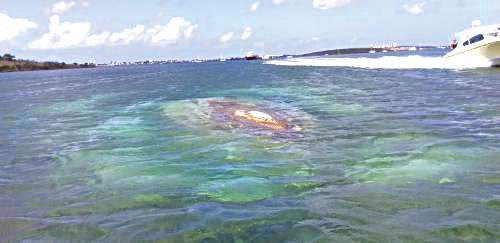For years, boats, some in very deteriorated condition, have been abandoned in territorial waters. They are commonly called wrecks. But are they in the eyes of the law? When is a boat considered abandoned? Response elements.
• What is a maritime wreck?
The first definition is given by a decree in December 1961 which fixes the regime for maritime wrecks. The decree was repealed but the definition remains the same: any boat in a state of non-buoyancy, abandoned by its crew who no longer ensures its maintenance, any sunken waste, etc. is considered as wreck.
If a vessel is stranded or semi-submerged but can be released and float again, it is not considered a wreck. If it can no longer float, it is submersible, so it is a wreck.
• What is an abandoned ship?
The notion of abandonment is defined by the transport code. Article L5141-2 thus stipulates: "Abandonment by the owner, the shipowner or the operator results from the absence of crew on board or the inexistence of guard and maneuver measures".
In other words, any boat left unattended, always in the same place and without maintenance is considered abandoned.
If there is a crew on board but the crew is incompetent or too small to maneuver, "the absence of maneuver measures" is recognized. Likewise if the engine is not running.
"In the case of a ship at anchor, the state of abandonment may result from the absence of regular maintenance or the absence of reaction following a disaster (flight, cyclone)", specifies the Ministry of Transport. in a technical note in December 2018.
• Who should check the abandonment of a ship?
It must be done by a sworn agent, namely a judicial police officer, an agent carrying out control missions in the field of maritime affairs, port officers and deputy port officers, ship safety inspectors maritime affairs. In the technical note from the Ministry of Transport, it is emphasized that "if possible" the sworn officer must not "depend on an authority which has a direct interest in the forfeiture of property or the removal of the ship".
• Who notices the presence of a wreck?
According to the decree of December 28, 2016, "anyone who discovers a wreck is required, as far as possible, to put it in safety, in particular by placing it out of reach of the sea" unless the maneuver represents a danger. The person must also "within forty-eight hours of discovery the declaration to the prefect or his representative".
It is also specified that "the wrecks are placed under the protection and the safeguard of the prefect who takes all useful measures for the rescue and takes care of the conservation of the rescued objects", rescue if the boat can be saved.
The discovery of a wreck of which the owner is unknown is the subject, by the prefect, of an advertisement in the form of posters or of insertion in the press. The owner then has a period of three months, from the date of publication or notification of the discovery or rescue of the wreck, to claim his property and, if the rescue could not be done, to declare that he intends to do so. Knowing that if the wreck represents a danger, the owner has the obligation to proceed with the recovery, removal, destruction or any other operation in order to remove the dangerous nature of this wreck.
(continuation and end in our Monday edition).
12,403 total views






No comments